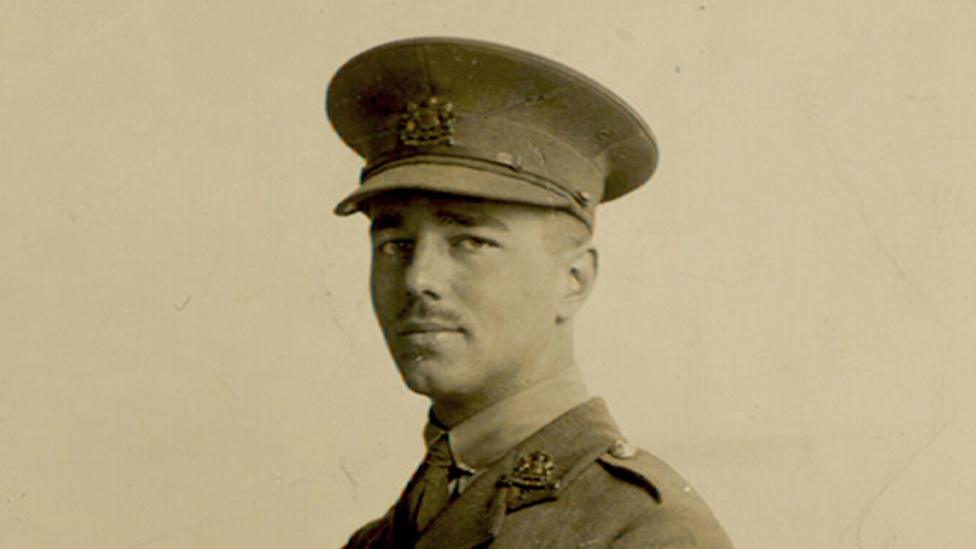Nurse's lost book reveals WW1 art therapy for PTSD

Jean Thomson qualified as a doctor after treating WW1 patients in Glasgow
- Published
A nurse's lost book has revealed unseen sketches and writing from World War One, created by soldiers recoving at a Glasgow hospital.
Jean Thomson's journal, dated 1917, gives an insight into how mentally-scarring conditions like shell shock were treated during the conflict.
She gathered the collection of “darkly humorous” work - poking fun at battlefield injuries and Trench Foot - at Merryflats War Hospital in Govan.
It was found locked in a trunk by Mrs Thomson’s granddaughter and will go to auction with war memorabilia at Hansons in Nottingham next week.
Jean's journal was found in a locked trunk
Jean, who qualified as a doctor in the 1920s, encouraged her patients to draw and write to aid their rehabilitation.
Art therapy is now commonly used to treat Post Traumatic Stress Disorder (PTSD) among ex-service personnel.
The album includes a sketch by a Private Coles depicting a wounded man bandaged from head to toe while on crutches talking to a nurse.
He tells her “I’m feeling a lot better today,” to which she replies “And you’re looking much better too”.
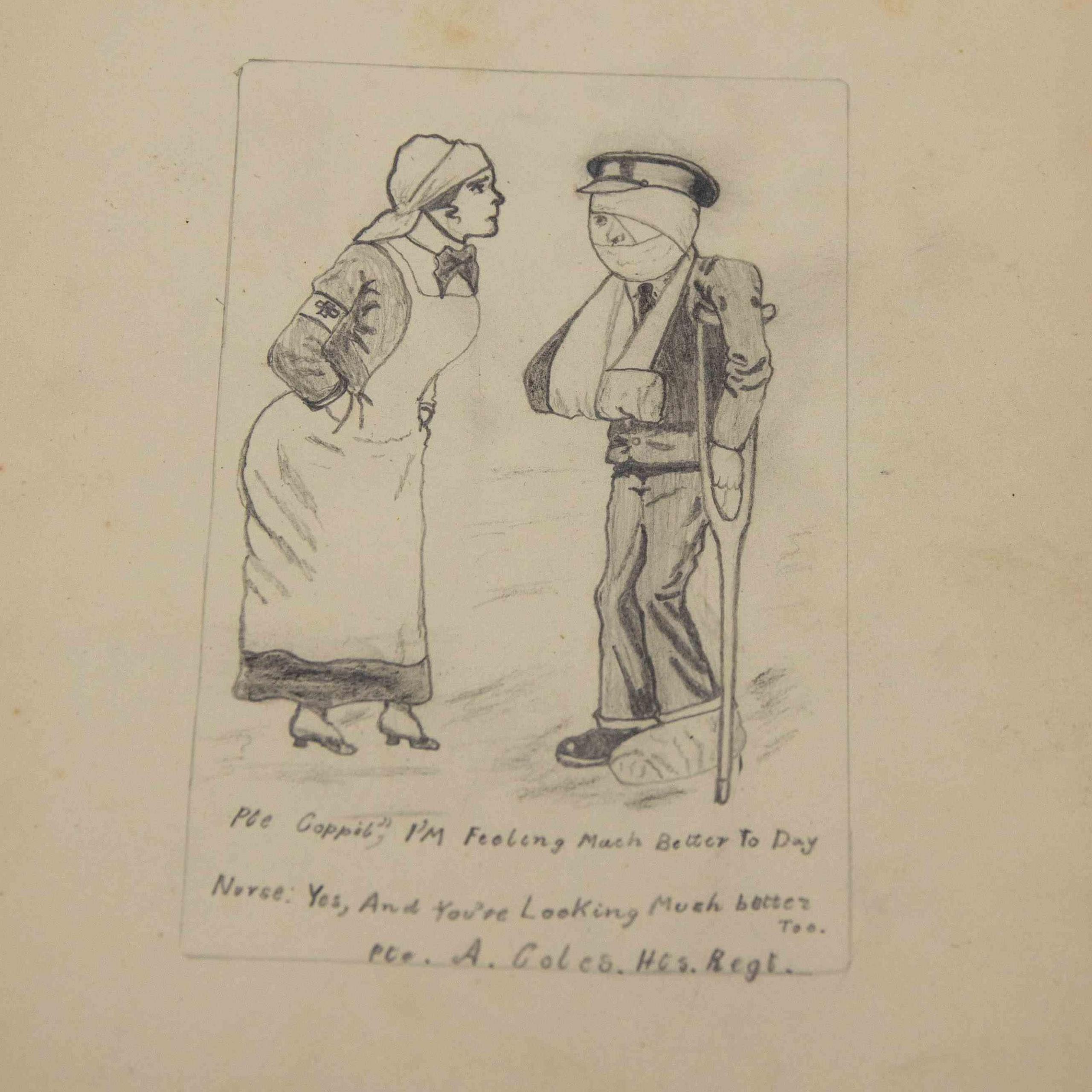
The sketches showed injured servicemen's "humour in the darkest times"
Another features a cartoon entitled “Trench Feet,” showing a dog with one swollen paw alongside the words: “It’s better to be a good old has been than a never was”.
It refers to the condition, first reported during combat in Russia in 1812, caused by soldiers wearing tight boots in damp conditions for long periods which, if left untreated, could cause fungal decay.
But among the moments of levity are more touching renders.
In one unsigned sketch, a silhouetted image of a soldier in uniform clutching his sweetheart is surrounded by the words “This parting gives me pain”.
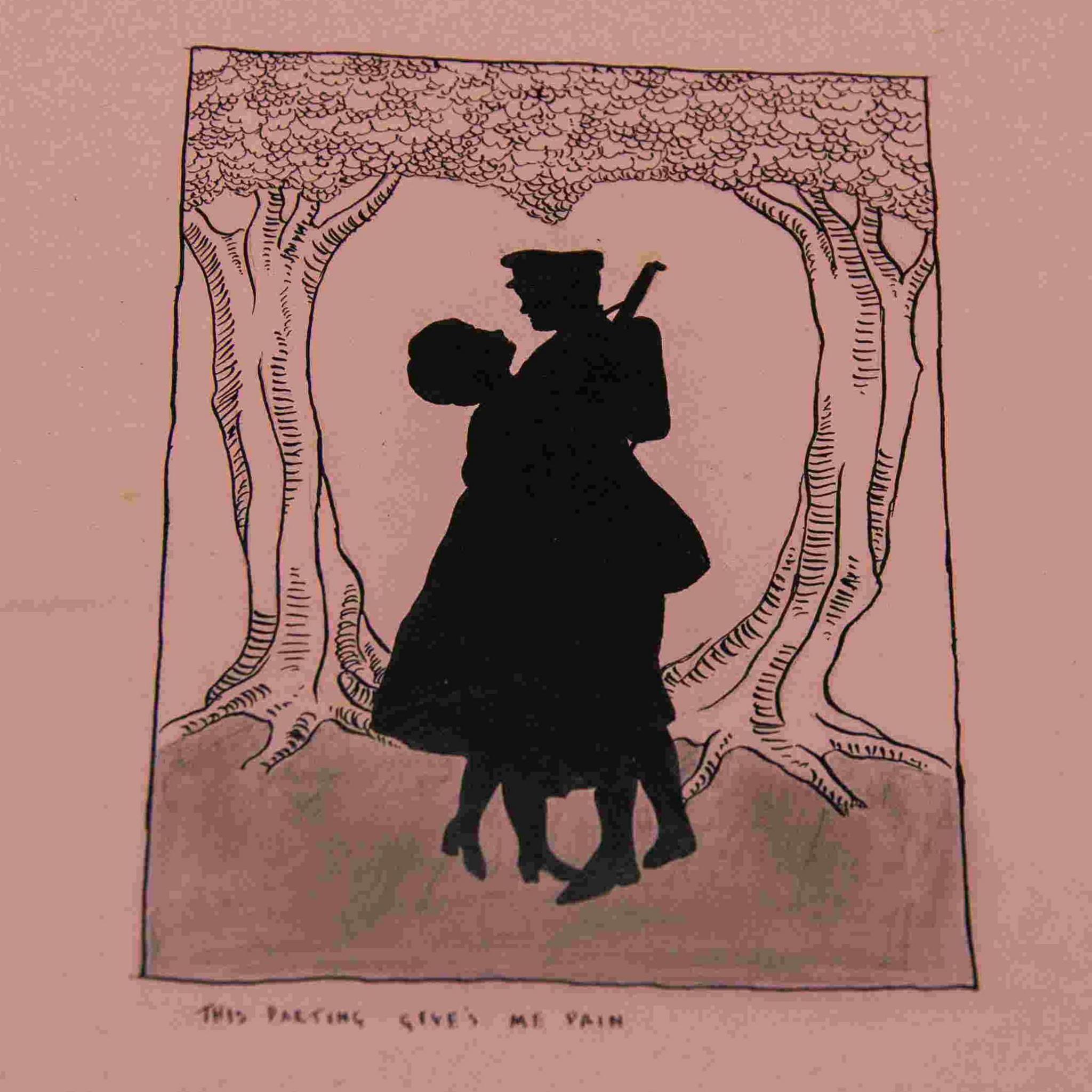
A soldier clutching his sweetheart with the words “this parting gives me pain”
Soldiers treated at Merryflats hospital included those wounded at the Battle of Vimy Ridge near Calais, France in April 1917.
Over 3,500 British and Canadian troops died while about 7,000 were wounded during three days of fighting.
The facility had previously been a poorhouse and psychiatric hospital before being requisitioned as a military hospital in 1914.
It was renamed and merged into what became the Southern General Hospital in 1922 - which is now the site of Glasgow's Queen Elizabeth University Hospital.
Mrs Thomson later qualified as a doctor in the 1920s, marrying Scotland rugby international Arthur Browning a few years later.
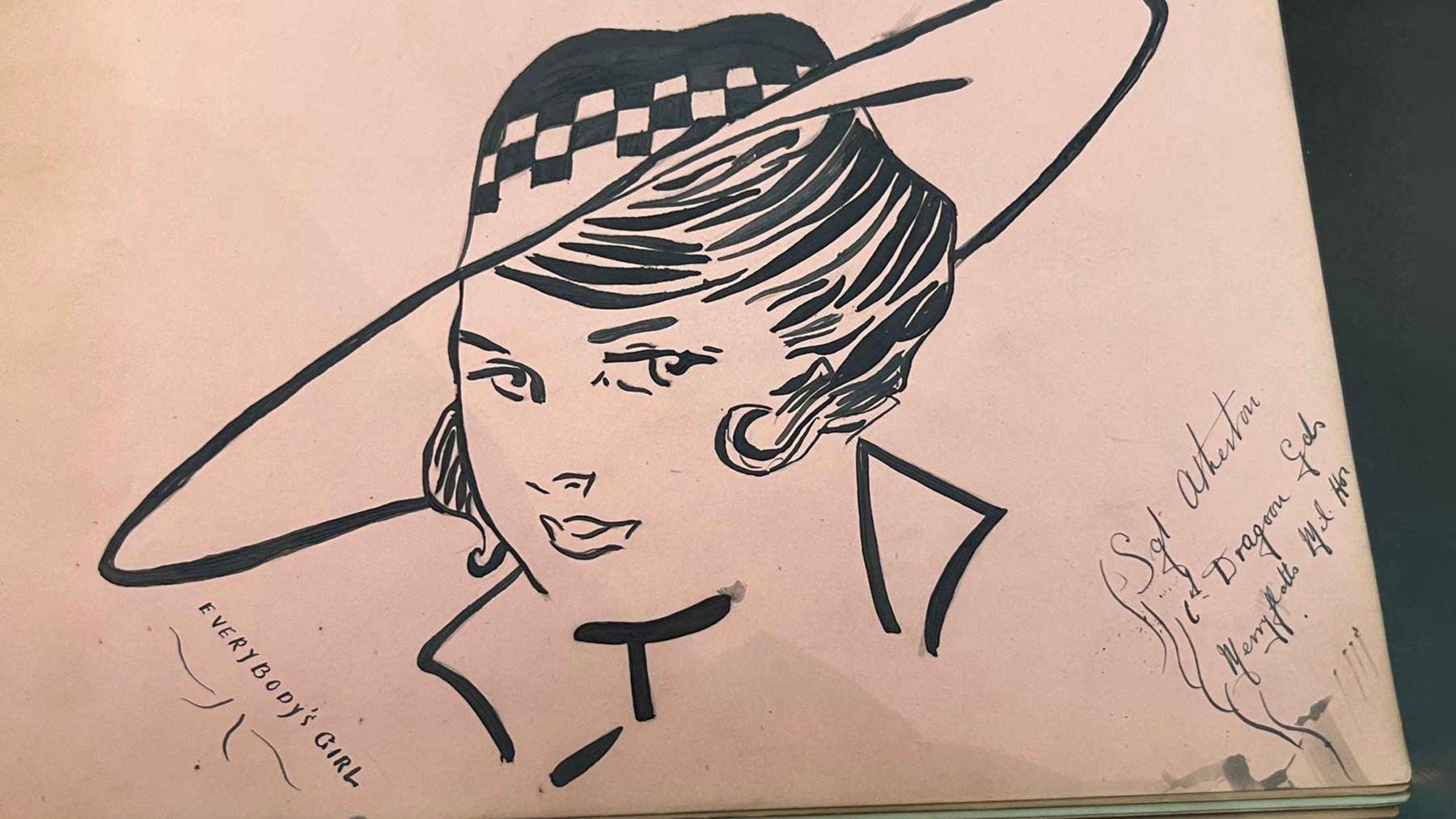
Jean encouraged her patients to draw and write to aid rehabilitation
Jean's granddaughter, Alison Jean Rutherford, discovered the book while clearing her mother’s house in St Albans in 2022.
She made the find alongside other WW1 mementos including necklaces made by injured soldiers from beads and rolled paper and pictures form the time.
Ms Rutherford said she plans to donate some of the money raised from the sale on Tuesday to the Poppy Appeal in honour of her grandmother.
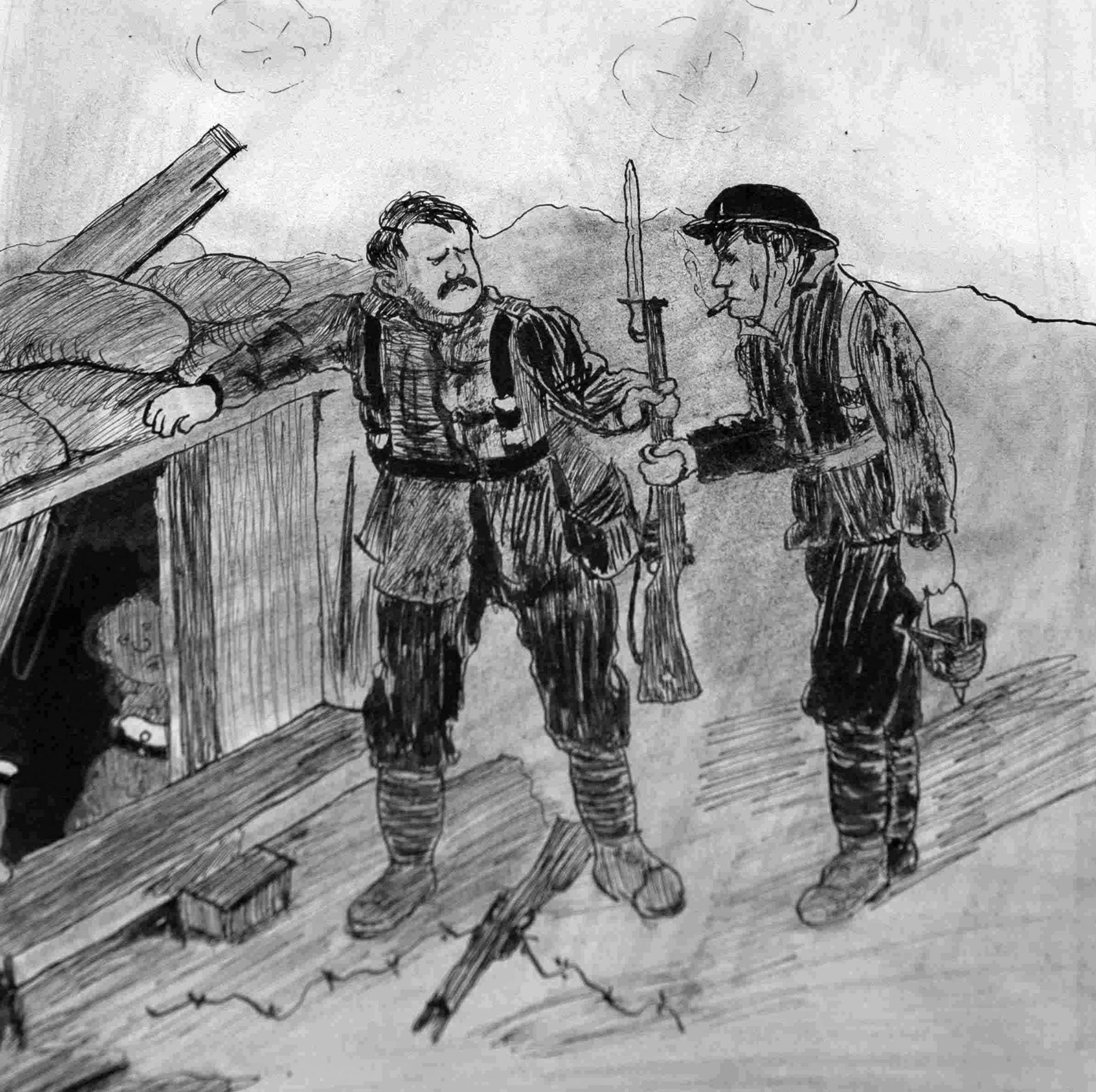
Sketches were made by patients at Merryflats War Hospital in Govan
Mrs Rutherford said: “My mother never showed me this album, though she gave me several rolled bead necklaces and explained how they were made by the soldiers and often given to the nurses.
“I found the album in an old trunk full of family papers that I took from her house after my mum died, along with photos of my granny in 1917.
“It seemed right to share it more widely.”

Art therapy like Jean's is now common in treating Post Traumatic Stress Disorder
Hanson's auctioneer Charles Hanson, will put the book under the hammer, said encouraging soldiers to find a creative outlet helped them deal with their mental and physical scars.
“Discoveries like this open our eyes to history and offer a glimpse of the character of men and women caught up in WW1,” he said.
“Jean encouraged patients to draw and write to aid rehabilitation and page after page is taken up by sketches and words put there by heroes from the trenches.
"It shows their humour, even in the darkest times."
Related topics
- Published20 March 2024
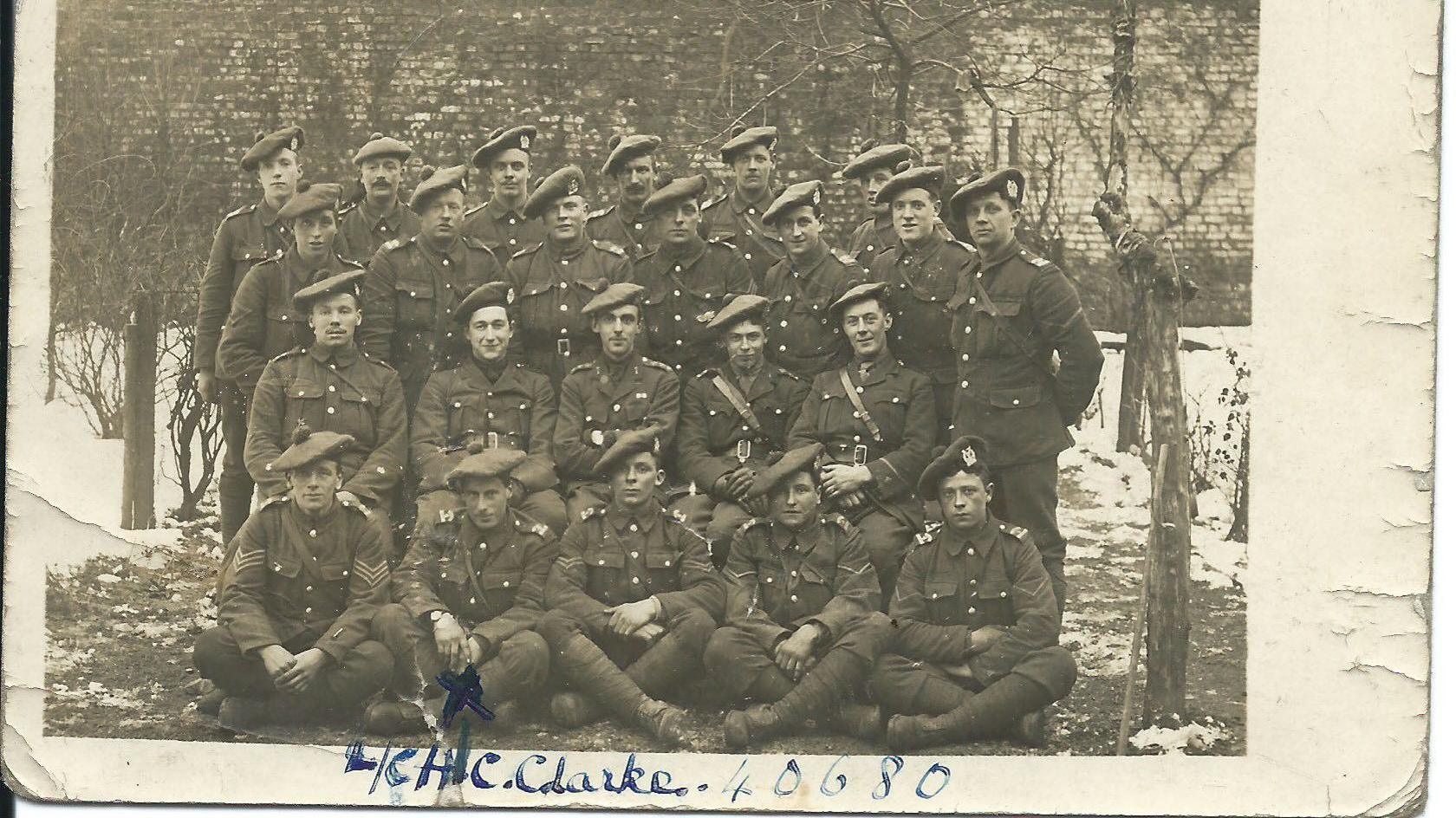
- Published12 November 2023
